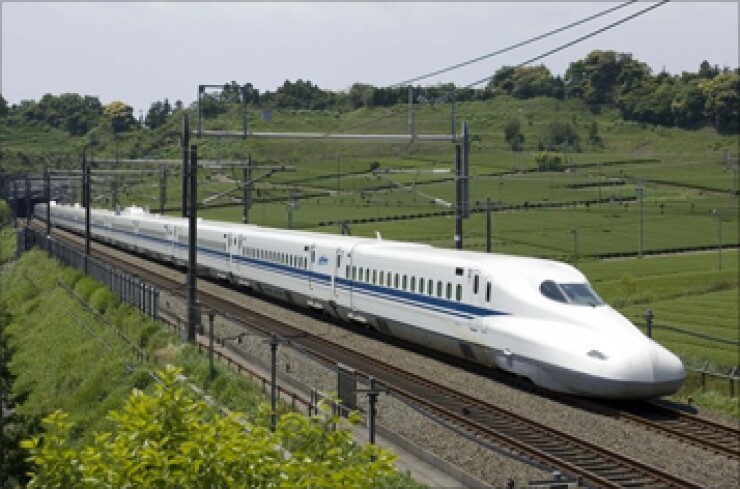
DALLAS — A proposed privately financed high-speed train system between Dallas and Houston would generate $2.5 billion in direct tax revenues for the state, counties, cities, and school districts along the 240-mile route over the next 25 years, according to a study released Thursday by project sponsor Texas Central.
Transit-oriented developments around the three proposed train stations will add another $2 billion of local property tax collections through 2040, the economic impact study said.
“The project will directly benefit each of the counties along the route and provide additional resources to the state and local communities to help fund transportation or any other needs and ambitions they choose to support,” said Tim Keith, chief executive officer of Texas Central Partners.
The bullet train project will not require federal grants for construction or public subsidies for operation, Keith said. However, Texas Central has not ruled out the use of low-interest federal loans to help fund construction of the rail line.
Texas Central said it expects to pay about $2.5 billion in state and local sales and property taxes on its taxable assets, including tracks, facilities, and stations, through 2040. As a private company, its capital expenditures also are taxable, Keith noted.
“The economic impact is unique because it will have lasting effects for generations,” he said. “Texas Central is providing tax revenue that can provide raises for municipal employees, put more teachers in schools, build new roads, hire more police and firefighters, or improve facilities in all of the counties where we’ll be operating.”
The study by Insight Research Corp. estimated total economic benefits to the state from the HSR project at $36 billion over 25 years. The projected impact includes the $10 billion that Texas Central plans to spend on the project’s design and construction.
The train system would be operational by 2021 but the economic benefits would begin when construction gets under way, the study said.
Construction of the rail system would create 10,000 jobs per year over four years, the study said, with operations and maintenance of the completed line requiring 1,000 permanent employees. Total railroad payroll after completion is estimated at $80 million per year.
The system will include stations in Houston, downtown Dallas, and in Grimes County between Bryan/College Station and Huntsville.
The station in Grimes County will cost approximately $1 billion, Keith said. The county could receive more than $50 million in property tax and local sales tax revenue.
“This is an unprecedented multi-billion-dollar private investment in the state’s future,” Keith said. “The overall economic impact is incredible and it’s real.”
Trains operating at more than 200 miles per hour will make the 240-mile run between Houston and Dallas every 30 minutes during peak periods and once an hour at other times.
The trip between Dallas/Fort Worth and Houston expected to take less than 90 minutes, with a single stop at its Brazos Valley station to be in Grimes County somewhere between Bryan/College Station and Huntsville.
Grimes County Judge Ben Leman, who is also the chairman and a founding member of Texans Against High-speed Rail, said he opposes the rail project because it could involve the use of eminent domain to acquire right-of-way through private property.
"This project establishes a dangerous threshold for utilizing eminent domain for the benefit of a private entity for the purpose of making a profit and should not be allowed," Leman said. "This would result in the possibility of abusing this power all across the state."
Texas Central will route the rails along a utility corridor adjacent to existing electric transmission line rights of way and intends to acquire property through negotiations with land owners, Keith said.





